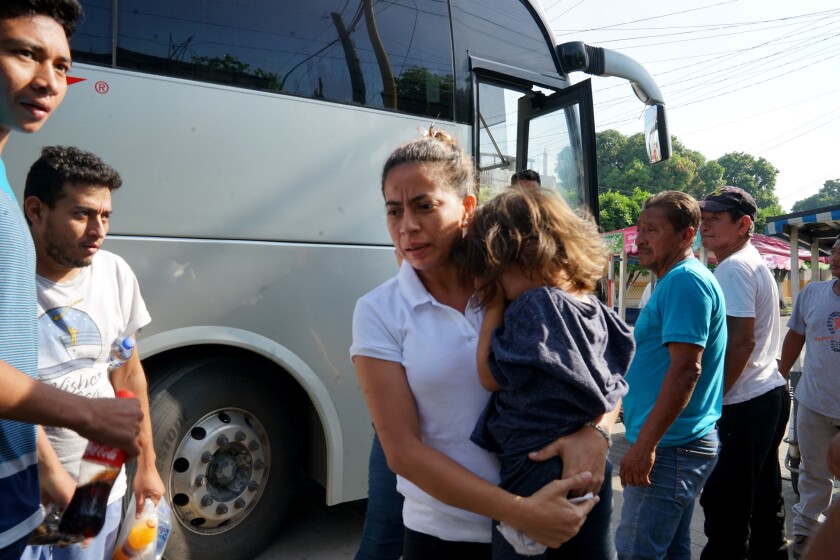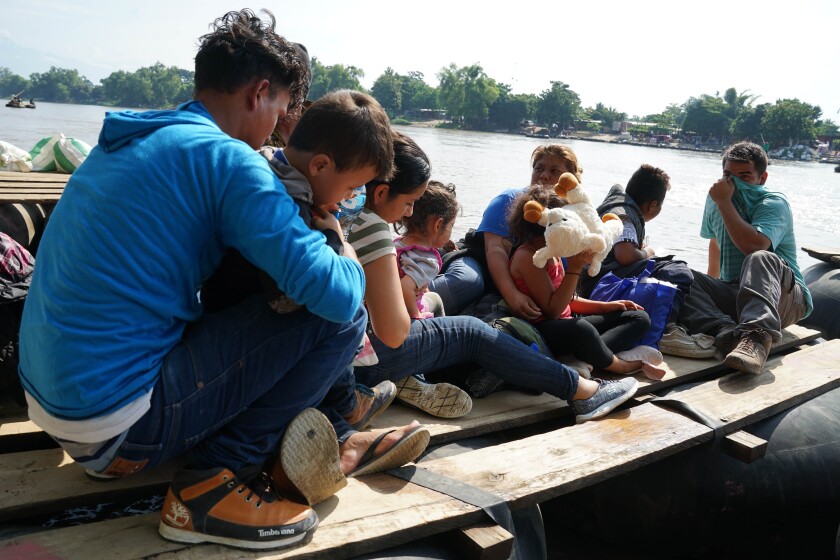The exhausted passengers emerge from a sleek convoy of silver and red-streaked buses, looking confused and disoriented as they are deposited ignominiously in this tropical backwater in southernmost Mexico.
There is no greeter here to provide guidance on their pending immigration cases in the United States or on where to seek shelter in a teeming international frontier town packed with marooned, U.S.-bound migrants from across the globe.
The bus riders had made a long and perilous overland trek north to the Rio Grande only to be dispatched back south to Mexico’s border with Central America — close to where many of them had begun their perilous journeys weeks and months earlier. At this point, some said, both their resources and sense of hope had been drained.
“We don’t know what we’re going to do next,” said Maria de Los Angeles Flores Reyes, 39, a Honduran accompanied by her daughter, Cataren, 9, who appeared petrified after disembarking from one of the long-distance buses. “There’s no information, nothing.”
The two are among more than 50,000 migrants, mostly Central Americans, whom U.S. immigration authorities have sent back to Mexico this year to await court hearings in the United States under the Trump administration’s “Remain in Mexico” program.
Immigration advocates have assailed the program as punitive, while the White House says it has worked effectively — discouraging many migrants from following up on asylum cases and helping to curb what President Trump has decried as a “catch and release” system in which apprehended migrants have been freed in U.S. territory pending court proceeding that can drag on for months or years.
The ever-expanding ranks pose a growing dilemma for Mexican authorities, who, under intense pressure from the White House, had agreed to accept the returnees and provide them with humanitarian assistance.
As the numbers rise, Mexico, in many cases, has opted for a controversial solution: Ship as many asylum seekers as possible more than 1,000 miles back here in the apparent hope that they will opt to return to Central America — even if that implies endangering or forgoing prospective political asylum claims in U.S. immigration courts.
Read the rest of the story
HERE.
If you like what you see, please "Like" us on Facebook either
here or
here. Please follow us on Twitter
here.



No comments:
Post a Comment